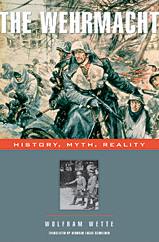
Tanks in Detail – Panzer III
Terry J. Gander
96 pages
published in 2004
Tanks in Detail is one of those overpriced series of military technology books quarely aimed at those of us with war nerd tendencies: short, packed with photos and drawings and going into slightly obsessive detail on a subject normal people at best find boring, at worst somewhat creepy. Reading books on warfare and military history can be justified because war is an important part of our history and it’s important to understand it, but you can’t justify this sort of book that way. This is for people who like their tanks, people like, well, me. As long as I don’t have to pay full whack for this, that is. At 12 pound 99 this isn’t exactly cheap for such a slender book, but fortunately the local remainder bookstore had these for five euros each. At that price, it was worth it.
Tanks in Detail – Panzer III is a reasonable introduction to the main German tank of the first half of World War 2, but which contains little that couldn’t be found on the internet for free. What makes up for it are the photos and drawings, especially the colour side views at the end of the book showcasing the various camouflage schemes used. There are some good pictures and drawings of the interior of the panzer III as well, showing e.g. the instrument panel and the gun mount. For those interested in such things, like model builders, there are however too few of these drawings to be helpful, nor is it clear which scale is used for the drawings and even dimensions aren’t given. It’s all a bit slapdash, to be honest.
